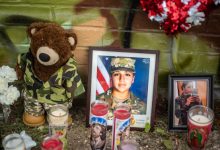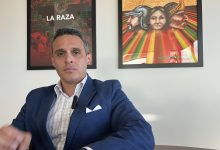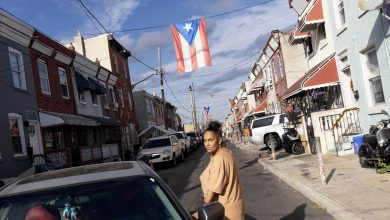Deaths at the border caused by the Border Patrol–when will it end?
The end of December arrives and with it the customary balances of the year. One of them is tragic: the deaths of immigrants at the hands of the Border Patrol and other agencies dependent on the Office of Customs and Border Protection (CBP), at the country’s borders, which has reached alarming numbers.
Alarming Numbers
According to an August report by the Southern Border Communities Coalition, forty deaths were recorded on the border in 2022, totaling more than 250 since 2010. There were more in 2021:58. And before, 35, 17, 17 and 12 in 2017. The data is updated to December 20, 2022.
Of the 250, 64 died from a shot, asphyxiation, taser (electric shock weapon used to incapacitate people), beatings or chemical agents at the hands of federal agents; 89 in high-speed car chases initiated by the Patrol that culminated in collisions; 54 for inadequate medical care or in medical emergencies. Some thirty died for various reasons, including four suicides and 18 people who drowned trying to cross the border.
Finally, 15 cases involved homicide at the hands of off-duty agents, who were consequently accused, convicted and sentenced to prison.
Of all those cases that ended in death and many more that resulted in injuries and hospitalization, how many officers were found guilty?
Not one.
Sadly in the agency’s 90-year history, no officer has ever been convicted of murder while on duty.
How is it possible?
The SBCC report: “CBP’s lack of accountability and oversight, coupled with its culture of violence, has resulted in the loss of life of US citizens and non-citizens.
Impunity
Specifically, in cases where the reason for death was “the use of force” or “fatal shooting”, and contrary to the other causes, there are almost no data.
October 6, 2022, El Paso, Texas:
“A Mexican man who was fatally shot inside a Texas Border Patrol station this week took a ‘sharp weapon’ from a desk inside the facility and continued to approach the US agents after they tried to detain him with a Taser… Border Patrol agents then opened fire on 33-year-old Manuel González Morán. He was taken to the hospital and later died from his injuries.”
October 11, 2021, Tucson, Arizona:
“City police are investigating the death of a man who was allegedly shot by an off-duty Border Patrol agent in Tucson last weekend.”
February 19, 2022, Douglas, Arizona:
“…The Cochise County Sheriff’s Office (CCSO) revealed that a migrant was killed by a Border Patrol agent near Douglas, Arizona. The CCSO removed that statement in subsequent press releases, stating instead that the migrant was seriously injured and succumbed to his injuries. When asked about the removal, “the public information officer explained that it had not been reviewed through the proper channels.”
This particular incident raises questions about the shift in the narrative and who influenced it, including among the possible culprits CBP and an agency called Border Patrol Critical Incident Teams (BPCIT).
Collectors of Evidence
These are described as “informal task forces intended to help border officials collect evidence, including at scenes where agency officials might be involved.”
It turns out that these are the teams who were supposedly in charge of investigating the homicides. But in fact, what they organized was a cover-up and just cared for the protection of the agents involved.
When these incidents resulted in deaths by use of force, Border Patrol did not turn over the investigation to those who by law are the only ones authorized to do so – the FBI, the DHS Office of Inspector General or the CBP Office of Professional Responsibility – but to those informal groups, the Border Patrol Critical Incident Teams or BPCIT or CIT.
The practice of investigating themselves in a totally informal way precedes the Trump presidency. Already in 2010 under Obama these groups were in charge of collecting evidence and investigating the cause of the death of an immigrant at the hands of uniformed officers.
To investigate the investigators
On October 27, 2021, the Southern Border Communities Coalition (SBCC), which brings together hundreds of non-profit pro-immigrant organizations, after an investigation, sent a letter to Congress denouncing that the BPCIT groups lack authority to carry out criminal or administrative investigations of agents and that the evidence indicates that they are allegedly involved in the obstruction of justice, and they protect the impunity of those responsible, operating from the shadows.
It said:
“According to a 2020 report from the Government Accountability Office, CBP does not have reliable information on deaths and has consistently failed to report information related to deaths to Congress.”
The next day the San Diego Union-Tribune published “Border Patrol Has Secret Police Unit Protecting Agents When They Kill, Groups Say” detailing the information provided to Congress.
“Border Patrol has special undercover units that work to cover up wrongdoing when agents kill someone or use force in potentially problematic ways, according to a letter sent to Congress Thursday calling for an investigation. These “shadow police units,” the letter says, have been operating since at least 1987 and without any real authority under federal law. They do not appear in Department of Homeland Security documents as official entities.”
As a result of the complaint, in January 2022 Representatives Carolyn Maloney (D-N.Y.) and Bennie Thompson (D-Miss.), chairs of the House Oversight and Reform Committee and the House Homeland Security Committee, respectively, summoned CBP Commissioner Chris Magnus to testify about the role of the BPCITs.
The congressional action was due to “reports that rogue units within Customs and Border Protection have interfered with police investigations,” reported The Hill.
The following month, the Office for Civil Rights and Civil Liberties (CRCL), in the Department of Homeland Security, sent a memo to Commissioner Magnus announcing the opening of an investigation into allegations of potential violations of civil rights or related civil liberties with the BPCIT, for being allegedly involved in performing criminal investigations without authorization.
And in June of this year, the American Civil Liberties Union (ACLU) stated that “the agency’s deadly actions raise urgent questions about how these activities are investigated and what steps are taken to ensure public safety and accountability.”
Once again, the ACLU emphasized that despite the increase in the number of these deaths, the investigations are still entrusted to the same body responsible for them, the BPCIT groups.
Finally, Commissioner Magnus ordered the disbandment of these units by the end of the year together with the transfer of all investigations of critical incidents to the Office of Professional Responsibility (OPR), a specialized body of the Department of Justice,
As a consequence of this decision, hopefully Border Patrol agents will no longer be able to investigate themselves.
Unauthorized extrajudicial groups
The existence of the BPCIT as extrajudicial groups that operated from the shadows for years to limit liability and protect, not the public, but the members of the agency should alarm us.
It was the work of the SDCC coalition that led to the decision at the highest government level to dismantle these investigative units, and specifically that of Andrea Guerrero, executive director of Alliance San Diego, which is part of the coalition.
Her work began when lawyers representing the family of Anastasio Hernández Rojas, murdered in 2010 at the San Ysidro port of entry, found evidence that the San Diego-based unit of the BPCIT had manipulated and even destroyed evidence in the case to protect the agents involved.
It is to be hoped that from now on they will be investigated and if possible, justice served, so that uninvestigated deaths at the border at the hands of federal agents will be a thing of the past.
This article was supported in whole or in part by funds provided by the State of California, administered by the California State Library and the Latino Media Collaborative.












